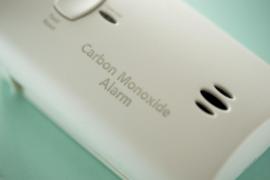- Community
-
- About Sherwood Sherwood Heritage Center Chamber of Commerce Marjorie Stewart Center Sherwood Center for the Arts Sherwood YMCA Family Resources
- Events and Activities City Calendar Library Events Community Events Event Permits Monument Posting Request Community Meeting Rooms Recreation Parks and Trails Directory Recreation Programs Sherwood Fieldhouse
- Community Field House Sherwood Demographics Sherwood School District Sherwood Youth Sports Utilities Volunteer Opportunities Highway 99 Pedestrian Crossing Public Safety Police Tualatin Valley Fire & Rescue
-
- Business & Development
- Government
-
- City Council Boards and Committees Urban Renewal Agency Agendas and Minutes Municipal Code Public Records
- Building City Attorney City Manager Code Compliance Community Development Community Services Economic Development Emergency Management Engineering
- Finance Human Resources Library Municipal Court Parks & Recreation Planning Police Public Works Utility Billing
-
- Online Services
-
- Job Opportunities Utility Billing Alerts & Notifications Email Subscriptions Sherwood Flash Alert Police Flash Alert Events and Meetings Agendas and Minutes Calendar
- Contact the City Submit a Request or Concern City Offices Municipal Code Documents and Forms Documents and Reports Forms and Applications
- Social Media
-
Carbon Monoxide Alarms
Carbon Monoxide Alarms
About 2,100 people die in the U.S. each year from carbon monoxide poisoning, according to the Journal of the American Medical Association; another 10,000 are injured. Carbon monoxide kills by replacing oxygen in the victim’s red blood cells. Though blood continues circulating through the body, there is no oxygen in the blood. High exposure can cause brain damage and death in a short time. (gazettetimes.com, Carbon monoxide detector law begins April 1, by Emily Gillespie, Friday, March 25, 2011)
Carbon Monoxide Alarms
Effective April 1, 2011 the State of Oregon Building Codes Division has adopted the provisions for carbon monoxide alarms as set forth in House Bill 3450. These provisions require the installation of carbon monoxide alarms in all new residential construction and when new structural permits are issued. Additionally, the alarms are required to be installed when a new carbon monoxide source is added to the home.
What does this mean?
It means if you add on, remodel, or install a carbon monoxide producing appliance, you will be required to install carbon monoxide alarms if your house does not already have them.
Possible Carbon Monoxide sources: a heater, fireplace, or cooking source that uses coal, kerosene, petroleum products, wood, natural gas or other fuel that produces CO as a by-product of combustion. Additionally, a garage attached to the house can communicate carbon monoxide through a direct opening into the living space.
Alarm Requirements
Alarms must be located in each bedroom OR within 15 feet outside of each bedroom, with an alarm on each story. To meet the requirements choose one of the following:
- Single Station Alarm: Single Station alarms can be battery operated, hard wired or plug in devices. Plug in devices are to be fastened to the structure. All devices must have a battery backup. Look for a UL 2034 rating.
- Combination Smoke/Carbon Monoxide Alarm: Combination devices must be hard wired with a battery backup. The smoke alarms must be interconnected so that when one smoke alarm is activated, they are all activated. If you are not making changes to the interior wall or ceiling the smoke alarms do not have to be interconnected. Look for ANSI/UL2034 and ANSI/UL217 or ANSI/UL2075 and ANSI/UL268.
- Household Detection System: Household carbon monoxide detection systems are monitored systems and generally professionally installed. They must include an audible alarm and shall be installed in accordance to NFPA 720 standards.
Exceptions: If you are only making exterior surface changes, like the siding, roofing, or windows, carbon monoxide alarms will not be required.
Revised 1/24/2020





